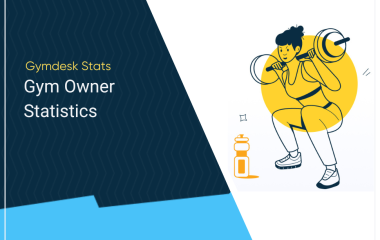Never has running a gym been so complicated, and so rewarding. As fitness companies grow to multiple sites, owners reach a strategic crossroads: should the approach to management be centralized or decentralized? In other words, does a centralized command center have all the answers, or should local sites be allowed to make independent decisions about how to operate, adapt, and engage their communities in ways that best fit their unique markets and members?
The question, “Centralization vs. Decentralization in Gym Management: What works best?”, isn’t just theoretical. It impacts your daily operations, member satisfaction, staff morale, and the long-term growth potential of your brand.
At one end of the scale, centralized management offers owners total control. Pricing, promotion, and policy are top-down affairs. A consistent member experience is provided at any of their branches, and decision-making closely follows the company’s strategy.
On the other hand, decentralized management cedes control to local teams. Each gym customizes class schedules, promotions, and community engagement to the feel of its neighborhood. It encourages agility and innovation but can be difficult to maintain in terms of consistency and oversight.
In this extensive guide, we’re going to break down the differences between the models. You’ll learn:
- What centralized and decentralized management actually look like in a fitness context
- The advantages and trade-offs of each
- How to compare them across decision-making speed, cost efficiency, technology, and staff autonomy
- Steps for transitioning from decentralized to centralized systems
- How hybrid approaches can capture the best of both worlds
Whether you run a small boutique studio or manage a chain of growing facilities, knowing where your business falls on the centralized vs. decentralized spectrum will enable you to make smarter strategic decisions and set up your business for long-term success.
Understanding Centralized Gym Management
People usually think of centralization in business as a well-organized, smooth-running machine, each part moving in harmony with the others according to orders from a single command center. When it comes to gyms, management that is centralized operates according to the same logic. Decisions, regulations, and systems emanate from one central point, usually the headquarters or ownership team, and proceed outward in a clearly defined hierarchy.
The purpose is clear: to build unity, efficiency, and a consistent brand experience for both workers and customers. In a world where uniformity signals credibility, centralization lets owners shape every image, mood, and function of the business.
Centralized Gym Management Defined
Centralized gym management in the fitness business means that most operational control rests with a centralized authority. This authority could be a head office, a franchise operator, or a board of directors overseeing all company branches.
Key decisions, such as membership pricing, marketing activities, work norms, and software applications, are made once at the top and then pushed to all sites. This top-down system also ensures consistent service levels. Everything that happens at any branch follows the same game plan.
Centralization is particularly valuable for a brand whose credibility depends on predictability. Members know what to expect, and managers understand where their boundaries lie.
How Authority Works in a Centralized System
In an organization characterized by central management, authority flows vertically. Senior management sets the strategy for middle managers to carry out, and teams at each site implement the plan. This clean-cut hierarchy can be visualized as a pyramid:
- Corporate Level: sets brand mission, policies, and long-term strategy.
- Regional/Area Managers: oversee groupings of clubs, keeping compliance with standards up.
- Local Managers: responsible for day-to-day operations within corporate guidelines, such as staffing and customer service.
This structure limits confusion, hastens standardization, and allows corporate managers to view performance on unified dashboards and analytics tools. The trade-off is that local teams might lose some freedom to experiment or react to niche markets. A class format that works perfectly in one suburb might flop elsewhere, but under centralized rules, improvising quickly is difficult.
Examples of Centralized Functions in a Fitness Chain
A well-designed centralized system touches every major function of a gym. In practice it looks like this:
- Billing and Payments: all financial transactions flow through one system. Members can pay online or anywhere, and revenue data goes straight into company reports.
- Member Management: customer data is stored in a single CRM system, which lets the business track attendance, retention, and engagement across all sites.
- Marketing: campaigns, branding, and social content are created centrally to ensure message consistency. Promotions roll out to all gyms at the same time.
- Pricing and Membership Policies: standardized tiers and benefits eliminate confusion and maintain perceived value.
- Staff Training and Certification: onboarding documents and training modules are created centrally to ensure everyone works to the same standard.
- Technology Integration: a shared gym management platform (such as Gymdesk) handles scheduling, access control, and reporting across every facility.
This degree of coordination creates operational efficiency. Adding a new member in one gym instantly shows up in the central database, and accountants can review real-time financial data from all clubs.
Who Uses Centralized Gym Management?
Centralization tends to suit larger outfits or any company destined for rapid expansion. Multi-location franchises, corporate health clubs, and exclusive chains built around strong branding are common examples.
- National Fitness Chains: brands such as F45, Anytime Fitness, and Planet Fitness rely on central marketing and operations to maintain uniform member experiences regardless of location. Strong organizational protocols govern safety, maintenance, and staff performance.
- University or Corporate Gyms: these facilities often share a parent organization that provides standards for how things are done.
- Luxury Studio Branding: premium studios often follow a centralized model to ensure every location is equally high-touch.
Today, smaller gyms that open a second or third location are adopting centralization earlier. Establishing unified systems from the start helps avoid the chaos and inefficiencies that come with aligning mismatched operations later.
The Role of Technology in Centralized Operations
Modern centralization would be impossible without digital infrastructure. A robust gym management software system underpins centralized control. It covers bookings, payments, memberships, and communications in one platform.
With a platform like Gymdesk, owners can:
- See real-time attendance and revenue data at all locations
- Maintain a standard calendar of events and pricing guidelines
- Track staff performance metrics
- Plan organization-wide marketing campaigns with room for local nuance
- Use pooled analytics to understand member behavior and retention rates
Technology bridges physical distance and removes much of the manual coordination that once slowed centralization.
Advantages of the Centralized Model
When done properly, centralization brings several strategic advantages:
- Consistency Builds Trust: wherever members work out, they enjoy the same professionalism and service quality, which boosts brand loyalty.
- Economies of Scale: centralized purchasing and marketing reduce costs per location.
- Clean Accountability: responsibilities are clear, which simplifies reporting and performance management.
- Simplified Training: standardized recruitment and training save time and uphold standards.
- Data-Driven Insights: centralized reporting enables leadership to uncover trends, predict churn, and allocate resources efficiently.
Challenges of Centralization
No model is perfect. A super-centralized system can feel rigid or out of touch with local needs.
Common pitfalls include:
- Lower Flexibility Locally: managers have limited power to counter local competition or seasonality.
- Slower Decision Cycles: approvals may require several layers of management.
- Staff Resistance: perceived micromanagement can hurt morale.
- Overdependence on Technology: if systems crash, operations can halt across all locations.
Acknowledging these constraints is key to designing a balanced model, especially for gyms that want local flavor without losing corporate discipline.
When to Evaluate Centralization
Centralization fits best when:
- You run three or more outlets in similar markets.
- Your brand promise relies on a consistent experience and aesthetic.
- You have robust technology to enable multi-site functionality.
- You value speed, scale, and brand integrity over hyper-local customization.
Looking Ahead
As the fitness industry becomes more data-driven, the benefits of centralization will likely grow. Integrated software, AI-driven analytics, and centralized marketing automation are reshaping how gym networks are run.

Understanding Decentralized Gym Management
If centralized gym management is about control and conformity, decentralized management is about reinvention and responsiveness. Instead of one command center calling the shots, the power to make decisions is distributed to regional managers, franchise owners, or individual studio heads. Each location operates as a micro-ecosystem with its own rhythm, culture, and relationships.
In an industry built on the human touch, such flexibility can be a major advantage. The head office might recommend pricing ranges, but a local manager decides whether to run off-peak discounts to attract students or retirees. A centralized marketing team might provide templates, while each branch creates localized campaigns reflecting community events or cultural preferences. Decentralization allows immediate action without waiting for a distant approval.
Decentralized management means authority and responsibility are distributed through multiple layers rather than concentrated at the top. The corporate office still exists, but its function shifts from command-and-control to coordination and facilitation.
Leadership provides guidelines, toolkits, and shared resources. Local leaders then adapt those frameworks to suit their markets. Headquarters may advise on pricing ranges, for instance, but a local manager decides whether to offer off-peak discounts. Marketing may provide templates, but each store can launch localized campaigns based on local events or preferences.
The Flow of Authority in a Decentralized System
In a decentralized organization, decision-making moves horizontally and outward. A basic structure looks like this:
- Corporate Leadership: defines brand vision, financial targets, and non-negotiables (for example, safety, technology platforms, and brand guidelines).
- Regional/Franchise Managers: help local teams execute while aligning with company principles.
- Local Gym Operators: own day-to-day activities such as scheduling, staffing, and local marketing.
This system relies on trust and communication. It assumes local teams have the expertise and motivation to make decisions aligned with brand goals. In return, corporate focuses more on data, resources, and mentorship than control.
Application in Practice
Where centralized gyms emphasize sameness, decentralized gyms embrace difference. Functions commonly devolved to local control include:
- Schedules: each club builds schedules based on member demand and instructor availability.
- Community Events: teams create outreach such as charity fundraisers, school fitness days, and partnerships with cafés or clinics.
- Promotions and Discounts: managers tailor offers to local holidays, weather, or competitor actions.
- Facility Layout: locations flex their space to add areas for local demand, such as yoga corners, spin zones, or functional training.
- Staffing and Training: managers recruit instructors who fit the local culture and adjust training accordingly.
- Social Media Activation: branches run their own channels with live stories, local challenges, and success stories.
Who Uses Decentralized Gym Management?
Decentralization appeals to independent gym owners, franchises, and community-focused studios that value flexibility and agility. It is especially effective for:
- Franchise Systems: operating under a large brand while making day-to-day calls locally.
- Boutique Studios: specialized services such as Pilates, CrossFit, or martial arts often require customization.
- Regional Chains: markets with distinct demographics benefit from local control.
- Emerging Brands: startups without resources for full corporate overhead can grow faster by empowering local managers.
A distributed model aligns with the community-based philosophy many fitness entrepreneurs embrace. Each branch embodies the spirit of its neighborhood while flying the brand flag above the door.
Decentralized Operations and the Role of Technology
Although decentralization prizes autonomy, technology still links everything together. Cloud systems, communication apps, and open analytics allow decentralized organizations to collaborate without sacrificing independence.
Contemporary software such as Gymdesk fits this hybrid ecosystem. Each location can run bookings, memberships, and marketing while ownership retains network-wide oversight. Dashboards display performance by site for comparison without requiring uniformity. Essential tools include:
- Cloud CRM Systems: local access to member data with centralized backups and reporting.
- Communication Tools: collaboration platforms such as Slack or Asana support teamwork.
- Local Marketing Dashboards: freedom to run local ads and promotions while feeding corporate analytics.
- Flexible Payment Gateways: support differentiated pricing while maintaining security and compliance.
Technology enables decentralized gyms to combine local inventiveness with corporate know-how.
Advantages of Decentralized Management
- Speed and Responsiveness: front-line decisions allow immediate responses to market changes or member feedback.
- Local Programming: locations customize offerings, from youth boot camps to senior mobility classes.
- Innovation and Experimentation: less red tape encourages trying new ideas.
- Empowered Employees: autonomy fosters pride, responsibility, and better customer service.
- Community Integration: deeper local ties build loyalty and referrals.
Challenges of Decentralized Management
The benefits are compelling, but risks must be managed:
- Member Experience Variability: uneven service or cleanliness can harm the brand.
- Policy Confusion: without clear guardrails, rules can be interpreted differently.
- Resource Waste: duplication in purchasing, marketing, or software increases costs.
- Limited Data Visibility: unified analytics are difficult when sites measure independently.
- Culture Fragmentation: weak shared values can dilute brand identity.
These issues often push growing fitness businesses to centralize some functions to maintain consistency and quality.
The Best Time to Decentralize
A decentralized model excels when:
- You operate in diverse markets with distinct demographics or cultures.
- Success depends on community engagement and grassroots marketing.
- You trust experienced managers or franchisees to make sound decisions.
- Your organization thrives on innovation and experimentation.
- You value staff creativity and empowerment.
In short, choose decentralization when flexibility, authenticity, and speed matter more than uniformity.
Evolving Toward Balance
Most brands discover it is not either/or. Many start decentralized, then add structure as they grow. Others begin with strict parameters and later allow more creativity. Understanding both sides helps you plan sustainable growth.
Centralized vs. Decentralized: Core Differences for Gym Owners
When choosing between centralized and decentralized management, you must know how each structure fares in crucial use cases. The right approach varies based on network size, management style, and desired local autonomy. The table below highlights key differences.
| Aspect | Centralized Approach | Decentralized Approach |
|---|---|---|
| Decision-making speed | Slower, since approvals pass through a central authority. Strategic consistency is high, but responses to market changes are delayed. | Faster at the local level. Managers act immediately on opportunities or challenges. |
| Consistency across locations | High consistency in branding, pricing, and service delivery. | Experiences vary by location, reflecting local culture and management. |
| Ability to adapt to local markets | Limited flexibility, as changes require corporate approval. | Highly adaptable to demographics, preferences, and competition. |
| Cost efficiency | More efficient due to bulk purchasing, shared systems, and centralized marketing. | Higher operating costs due to duplication and smaller-scale purchasing. |
| Technology requirements | Requires integrated, organization-wide systems. | Can operate with independent tools, but integration challenges may arise. |
| Staff autonomy | Lower autonomy with centrally guided processes and decisions. | High autonomy empowers staff to innovate and own outcomes. |
Broadly speaking, a centralized approach fits large, multi-location gym chains where consistency, brand control, and cost management are paramount. It offers reliability and systemization but can stifle local creativity. A decentralized model suits gyms that serve varied communities or niche markets, where nimbleness and local engagement matter more than standardization.
Small-to-medium companies often flourish under decentralization, while expanding franchisees usually migrate toward centralization as they grow. The right answer depends on your strategic objectives, technology maturity, and your preferred balance between efficiency and flexibility.
Pros and Cons of Centralized Models
Every gym owner dreams of a system that runs smoothly across every location: consistent service, clean data, unified messaging, and a team connected to a shared mission. That is the promise of centralized management. Done correctly, it instills order, accountability, and efficiency across the network. It also has trade-offs.
1) Consistency and Branding
Members expect a consistent experience whether they visit your flagship site or a suburban branch. Centralization manages brand message, visual identity, and customer experience from one place. With explicit standards, everything from class structure to logo placement aligns.
Benefits include:
- Consistent member experience: reliable facilities, brand-standard equipment, and programs delivered across all clubs.
- Consistent brand messaging and marketing: unified campaigns, tone, and promotional materials across ads, signage, and social media.
- Pricing and membership uniformity: standardized models reduce confusion and perceived inequality.
- Efficient training for staff: shared training, performance goals, and service standards make one brand operate as one team.
Consistency also frees leadership to execute changes network-wide, enabling faster, calmer scaling.
2) Visibility and Reporting
Central control gives owners a 360-degree view of operations. Instead of chasing reports, data from every site flows into one dashboard for real-time analysis.
Key improvements:
- Cross-site performance comparisons to identify star locations and those needing support.
- All-in-one finances with a single source of truth.
- Membership retention analytics to monitor churn and engagement.
- Marketing performance to track conversions and cost per acquisition.
This transparency shifts leadership from reactive to proactive. Centralized data also promotes compliance and accountability through consistent reporting templates and clear metrics.
3) Reduced Local Flexibility
Centralization can slow local responses.
Common challenges:
- Delayed response to competition when approvals take time.
- Regional preference gaps when one-size-fits-all solutions miss local nuances.
- Weaker community ties if strict rules hinder grassroots engagement.
- Lower staff initiative if front-line teams feel decisions are always made above them.
Balanced organizations counter this with structured feedback loops and hybrid policies that keep core standards centralized while granting local autonomy in member-facing areas.
Pros and Cons of Decentralized Models
Decentralized management prioritizes flexibility and trust. Local managers can respond to member demand, competitive moves, and community relationships. It adds adaptability and personality to the brand, but it also brings risks.
1) Local Autonomy
Advantages include:
- Faster response to local changes such as new competitors or emerging trends.
- Better demographic targeting with offerings tailored to each market.
- Greater staff ownership through involvement in scheduling, programming, and marketing.
- Deeper community ties via events, partnerships, and local causes.
2) Innovation and Experimentation
Decentralization encourages testing:
- New class formats and programs that can scale if successful.
- Flexible pricing models such as off-peak plans, family passes, or punch cards.
- Localized perks and promotions that build camaraderie and reduce churn.
- Community-focused workouts and partnerships that strengthen reputation.
To capture value, organizations must share wins across locations.
3) Inconsistencies in Operations
Risks to manage:
- Inconsistent member experience across locations.
- Uneven policy application in safety, billing, or complaints.
- Brand drift in tone and design.
- Cumbersome network-wide rollouts of tech or compliance.
Owners who succeed with decentralization provide clear, adaptable guardrails, facilitate cross-location dialogue, remain visible without micromanaging, and hire entrepreneurial managers with strong leadership instincts.
Many companies ultimately adopt a hybrid model that blends centralized efficiency with local autonomy.
Transitioning From Decentralized to Centralized
For gym owners, moving from decentralized to centralized control is a major transformation. Success requires careful planning, clear communication, and the right technology.
Communicating the Change
- Explain the benefits: clarify how centralization improves consistency and member experience and creates efficiency.
- Set timelines: provide a roadmap for when changes will occur and what to expect.
- Answer questions openly: address concerns about roles and member benefits.
- Establish feedback channels: use surveys, meetings, and Q&A sessions.
Implementing New Tools
Centralization depends on systems that link and organize data across locations.
- Integrated gym management software: manage sign-ups, scheduling, billing, and reporting for all locations in one platform (for example, Gymdesk).
- Consolidated member database: maintain a single system of record.
- Consistent reporting: standardize performance, revenue, and engagement metrics.
- Cross-location scheduling: control class availability, staff hours, and member demand network-wide.
Training and Onboarding Staff
- Phase-in schedule: roll out changes gradually to avoid overwhelming teams.
- On-site training: provide hands-on practice with new systems.
- Document standards: create concise, user-friendly guides.
- Peer mentorship: pair early adopters with learners.
With the right tools, training, and communication, centralization can position your gym for a stronger future.
Is your gym looking for a system that supports both centralized and local management styles? Begin a free 30-day trial at Gymdesk.
Which Is Best for Your Gym?
Deciding between centralized and decentralized management is not about perfection. It is about matching the model to your business, growth stage, and community. Keep these factors in mind:
- Size of operation: single-site gyms often flourish under decentralized management. Larger networks benefit from centralization to ensure consistency in brand, pricing, and member experience.
- Growth stage: new or expanding gyms often start decentralized for flexibility and learning, while big chains embrace centralization to protect the brand, scale operations, and control costs.
- Target market: similar markets favor centralization for efficiency and uniformity. Diverse markets favor decentralization for customization.
- Management style: hands-on leaders may prefer centralization; collaborative leaders may favor decentralization.
- Technology readiness: centralization thrives on strong systems. If you already run powerful software such as Gymdesk, you are better positioned for centralization. If you rely on manual processes, decentralization may be more realistic in the short term.
When each approach fits best
- Centralized: widespread multi-location gyms with similar demographics, franchise systems prioritizing brand control, corporate chains emphasizing efficiency and oversight, and data-driven operations.
- Decentralized: gyms serving distinct communities, boutique studios built on local culture, early-stage gyms experimenting with programming or pricing, and organizations that rely on independent, entrepreneurial managers.
Finding the right balance
Most profitable fitness businesses implement hybrid management models that offer the control of centralization without sacrificing the agility of decentralization. For example, centralize financial management, data reporting, and branding, while decentralizing class programming, community engagement, and event planning.
Ultimately, the right model comes down to your growth vision and your investment in reliable systems. Be ready to adapt as your business changes.
Finding a Hybrid Solution
In practice, most successful gym businesses operate as hybrids. Owners keep control of key operational components, while each location has enough freedom to execute locally. This is especially useful for growing or market-diverse gyms.
Key hybrid strategies
- Centralize core functions such as billing, reporting, and member data to ensure accuracy, compliance, and financial control.
- Decentralize member-facing activities such as programming and community events to preserve local relevance and staff creativity.
- Standardize processes with room for customization so brand and service standards are fixed, but delivery can adapt.
- Form cross-location task forces to share best practices and drive continuous improvement.
What to centralize vs. decentralize
- Typically centralized: financial management, brand standards, core technology systems, and membership structures.
- Typically decentralized: class scheduling, local promotions, community partnerships, and facility layout and amenities.
The hybrid model delivers the stability of corporate systems without extinguishing the entrepreneurial energy that drives local connection.
Key Takeaways for Fast-Growing Fitness Businesses
The best management style varies by size, goals, and culture. Many multi-location gyms centralize core functions such as billing, branding, and technology, while empowering local teams to craft programming and engage with the community. Modern software makes this balance easier than ever, providing visibility and synchronization without constraining creativity. As your network expands, periodically review your structure to ensure management aligns with your direction and your members’ evolving needs.
Ready to streamline your gym with a modern system that supports both centralized and decentralized approaches? Whether you are shifting from decentralized to centralized systems or building a hybrid network, modern software can keep your brand cohesive across all locations.
Start a 30-day free trial at Gymdesk.
FAQs About Gym Management Models
What size gym business typically benefits most from centralized management?
Centralized management works best for multi-location gyms with three or more locations, since consistency, efficiency, and brand continuity become increasingly important as the network grows.
How does centralized management affect staff retention at gyms?
While centralization can reduce some local autonomy, it often improves clarity, support, and career development pathways when paired with strong communication and recognition systems. These are key factors in retaining motivated staff.
Can a single-location gym benefit from centralized management principles?
Yes. Single-location gyms can apply centralized practices in billing, scheduling, and marketing across departments or programs to increase efficiency and enhance the member experience.
What technology is essential for implementing centralized gym management?
Core tools include gym management software for memberships, billing, and scheduling, a CRM system for lead follow-up and sales workflows, and data dashboards that consolidate performance metrics so owners can make real-time, data-driven decisions.
How long does transitioning from decentralized to centralized management typically take?
The transition typically lasts three to six months, depending on the number of sites to integrate and the time required for staff training. A phased rollout with open communication supports better adoption and less disruption.
 Gym Owner Statistics: The State of Gyms, Member Trends, and Usage Data
Gym Owner Statistics: The State of Gyms, Member Trends, and Usage Data




 EN (English)
EN (English)
 JA (日本語)
JA (日本語)